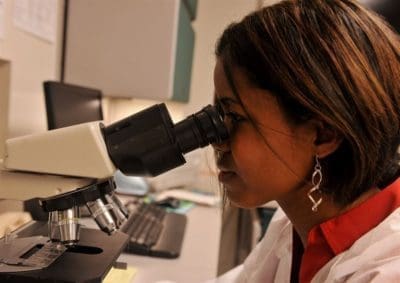Diagnostic Laboratories today are faced with economic challenges, staffing shortages and government reimbursement reductions. These challenges are threatening the already small margins on which laboratories depend and are driving laboratories to critically evaluate their normal operations. Inefficient legacy systems and unresolved process issues can no longer be ignored in the face of dwindling financial resources, shrinking pools of trained experts, and increasing budgetary constraints.
While these challenges are not new, the level of urgency increases with each passing year. In the late 1990s, while completing my Master’s degree, I worked in an organization where processes were highly inefficient and the opportunities for improvement were endless. Improved turn-around time was the goal of my Master’s project. The objective was a 50% turn-around time improvement within the organization. I collected data, observed and conducted interviews with staff. Even before I became a Lean advocate, I intuitively identified the need for one-piece flow, increased revenue, pull instead of push, waste elimination and many other process efficiency concepts. Using the data I gathered from my study, I made realistic recommendations for incremental progress toward the project goal. Upon conclusion of the project, I scheduled a meeting with leadership to present my findings. Sadly, at that time, leadership failed to recognize the long-term benefit of improving process efficiency and dismissed my conclusions and recommendations. They rejected a shift in focus from mass production in a wasteful environment to process efficiency, deeming the changes too costly and too difficult to implement. Consequently, since the 1990s, the organization has suffered losses and has closed many of their locations.
As I look back, implementation of a continuous improvement initiative wasn’t urgent in the 1990s, because the profit margins were generous, but it was necessary, as time has confirmed. Taking the current economic context into consideration, I would have to ask: is continuous improvement in the current environment even possible? Based on current laboratory structures, staffing levels and added management responsibilities, is it even realistic to expect that laboratories have the time and resources to invest in process redesign? But then again, do they even have the option of ignoring the potential gains that could be realized from a Lean transformation? Is the failure to leverage Lean philosophy, methods and tools a failure of leadership?
Jeff Liker stated that 90% of Lean efforts fail because a successful implementation of Lean requires dedicated leaders, organization-wide support and staff willing to lead and guide the effort. Notice that the condition for success is engagement at all levels of the organization–from leaders to bench workers. Why, then, are we not seeing laboratories clamoring for the education and training that will ensure they not only survive, but also thrive in the coming economic environment? What is there to lose?
The new paradigm for laboratories requires courage and vision. The problems we failed to address in years past must be elevated to the level of urgency and resolution using the creativity and foresight of our entire workforce. We need to be asking, each day, with each task, WHAT IF and WHY NOT?



